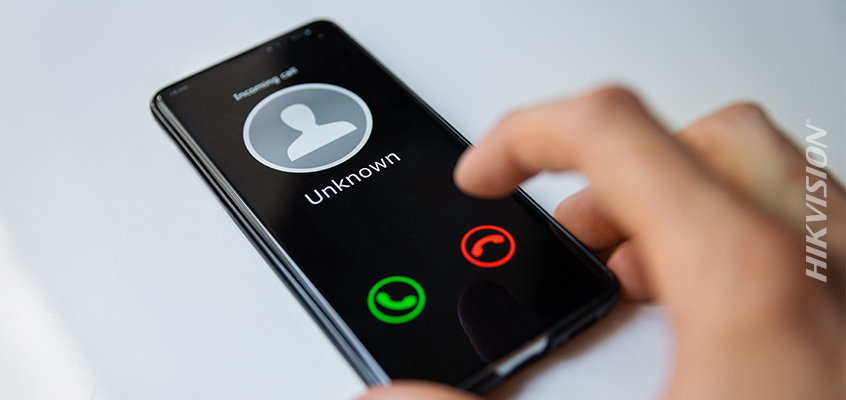Le directeur principal de la cybersécurité de Hikvision discute des problèmes de sécurité liés aux escroqueries par vishing, Partie 1

Le directeur principal de la cybersécurité de Hikvision, Chuck Davis, a couvert un large éventail de sujets de cybersécurité dans les récents blogues HikWire, notamment “Le directeur principal de la cybersécurité de Hikvision discute des problèmes de sécurité liés à la vulnérabilité du routeur domestique : 3 conseils pour améliorer la sécurité.”
Aujourd'hui, Davis de Hikvision explique les arnaques vishing.
C’est quoi le vishing ?
Les escroqueries téléphoniques sont presque aussi anciennes que le téléphone lui-même. En fait, la plupart d'entre nous ont probablement été la cible d'une attaque de vishing mais ne connaissons pas le terme vishing. Selon le rapport Proofpoint’s 2020 State of the Phish, seulement 25% des personnes interrogées ont pu définir avec précision le terme.
Le vishing est une combinaison du mot ‘‘voix’’ et du mot ‘‘phishing’’ : voix + phishing = vishing.
Le vishing est une forme d’hameçonnage qui utilise des appels vocaux plutôt que des courriels pour inciter une victime à divulguer des informations personnelles, sensibles ou confidentielles à un attaquant. Il s’agit essentiellement d’un nouveau terme pour désigner une escroquerie par téléphone. Les arnaques au vishing prennent toutes les formes, y compris le recouvrement de créances, les organismes de bienfaisance collectant des fonds et les attaquants prétendant appeler de votre banque.
CSO online a écrit : “Presque toutes les attaques de vishing ont quelques points communs. Les appels téléphoniques sont initialement passés via des services de voix sur IP (VoIP), ce qui permet aux vishers d'automatiser plus facilement tout ou partie du processus et plus difficile à retracer pour les victimes ou les forces de l'ordre. Et le but ultime des attaquants est de profiter de vous d'une manière ou d'une autre.''
Cette approche permet aux attaquants d'usurper l'identité de l'appelant, de sorte que dans certains cas, l'appel semble provenir d'un numéro de téléphone connu ou de confiance.
Statistiques de vishing
Pour mieux comprendre la prévalence des attaques par vishing, les statistiques suivantes ont été tirées du rapport 2019 Scam Call Trends and Projections :
• Plus de 28% de tous les appels frauduleux ciblaient des victimes en utilisant des données personnelles.
• 75% de toutes les victimes d'escroquerie ont été appelées par des fraudeurs qui avaient déjà leurs informations personnelles.
• Près de 1 personne sur 3 qui a subi une perte d'au moins 1 000 $ pensait répondre à un appel d'une entreprise qu'elle connaissait.
• 39% des victimes ont déclaré que les escrocs connaissaient leur adresse personnelle.
• 75% des victimes d'escroquerie ont déclaré que les fraudeurs étaient en mesure de vérifier tout ou partie de leur numéro d’assurance sociale.
Revenez demain lorsque nous vous présenterons des exemples de vishing et des moyens d'éviter de devenir victime de ce problème de sécurité.
